7UP (History, Marketing, FAQ & Commercials)
7UP is a non-carbonated lemon-lime flavored soft drink internationally. If you love and enjoy this drink, you might have wondered more about its history included who created it, how long it has been around, and how it is different today from the original drink. Keep on reading to learn the answers to those questions and more!
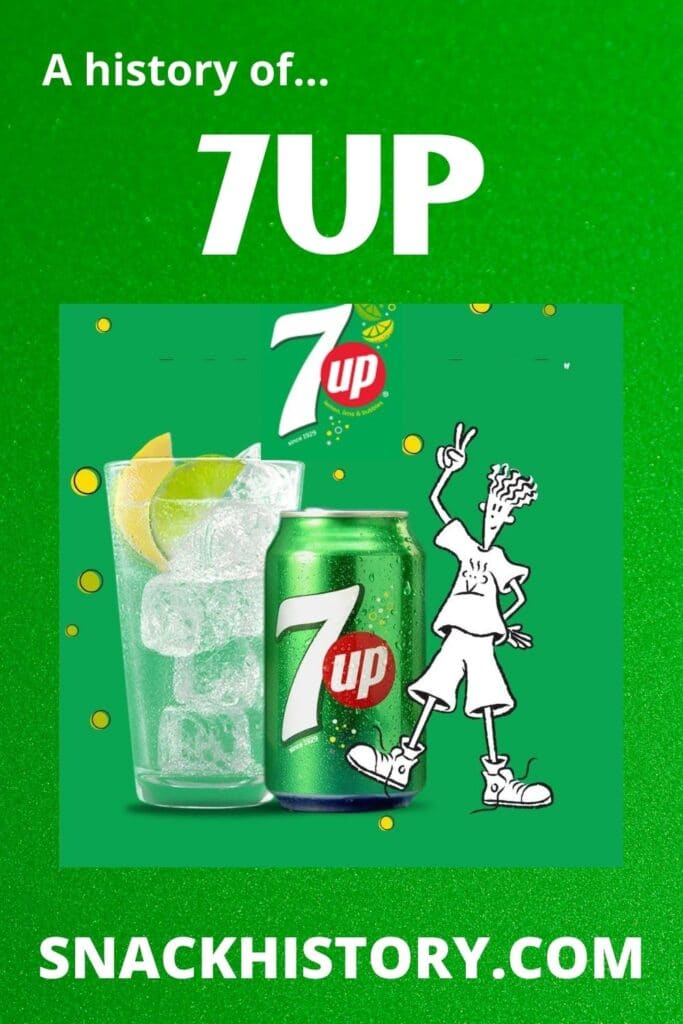
Who Created 7UP?
The original drink we now call 7UP was created in October 1929 (just a few short weeks before the infamous stock market crash) by a company owned by Charles Leiper Grigg. This drink was introduced under the name Bib-Label Lithiated Lemon-Lime Soda. I know it is not as catchy as the name 7UP –which is why the name was quickly changed to 7UP – Lithiated Lemon-lime. However – both names have a fascinating descriptive word – did you catch this part of the name – Lithiated?
Please leave a review or any memories of this snack in the comments at the bottom of this page. Thank you!
If you surmised that some form of Lithium is used in this drink, you guessed correctly. The original formula contained lithium citrate. Although this seems weird now, remember over time, we learn more about what different ingredients and drugs do and what they should be used for. At the time of the creation of this drink, Lithium was believed to positively affect a person’s overall mood.
When this drink was first released on the market, Lithium was an ingredient that was a selling point. The drink was advertised to boost your spirits and to make you happier. Who wouldn’t want a drink that would make you a more joyful person?
It is important to note that the reference to Lithium being a key ingredient in this drink remained as part of the drink name to 1936. Remember that 1929 through 1936 cover the 4 years of the great depression as well as the first 3 years that it was “over.” We put it over in quotation marks as even though the end of the depression is officially in March of 1933, most people view this period of all of the 1930s. Most Americans would gladly do anything that could potentially lift their spirits during this period, if only for a little bit. By the mid to late 1940s, 7UP was the best-selling soft drink in the world.
When was Lithium Removed From 7UP?
In 1948, Lithium was banned from soft drinks, and for a period, it had a complete ban in America. It was initially banned due to overdoses and deaths in America. In the 1970s, the FDA allowed it to come back on the market again, but this time only as prescribed medicine.
So, if you never had the pleasure of drinking 7UP before 1948, you never had it with its famous mood-altering properties of Lithium.
Has a Diet Version Always Been Available?
Just like with most foods, a diet or sugar-free version has not always been available. In 1967 they released a diet version called Like. In 1970 they released a sugar-free version called Sugar-Free 7UP.
Society has not always cared about the ingredients in their food or drinks, so it was not really until the 1960s and 1970s where people started to become more health-conscious that it became essential to create a diet or sugar-free versions of soft drinks. Until the market demanded it, there was no real push to do this.
However, once they introduce sugar-free and diet drinks as an option, they were immediately successful.
Logo
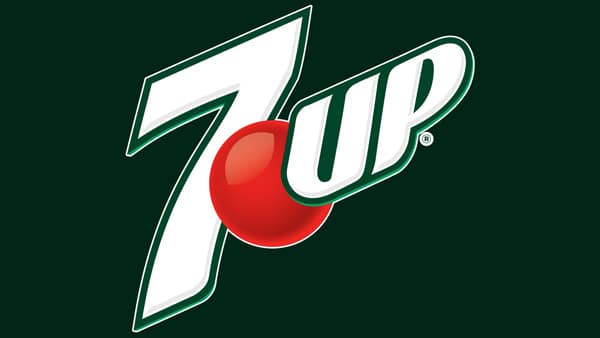
Why is it Called 7UP?
So, why is 7UP called 7UP? Although this is a prevalent question, there is no obvious or even official answer. However, there are many theories that people have come up with that could be the answer. We will share some of them with you, and you can decide which theory makes the most sense.
- The drink has a pH of 7. This one is debunked. The actual pH of 7UP is 3.20. The pH of something is a chemistry term where the number represents the acidity or alkalinity. A pH of 7 would mean neutral. The lower a value is, the more acidity the solution has. Most common soft drinks have a pH between 2.38 to 3.70 – the 3.70 is Diet 7UP. However, root beers are even closer to neutral at a range of 4.34 to 4.75.
- The Number of Ingredients – This is one of the most popular theories as there were originally only 7 ingredients. The original ingredients were Lithium, sodium citrate, carbonated water, sugar, citric acid, the essence of lemon, the essence of lime. This could be an explanation of the 7, but what about the up? Well, the following theory could describe that one.
- The Drug – The original formula contained Lithium, and they advertised this as a mood enhancer. So by drinking 7UP with these 7 ingredients, a consumer’s mood will go up. Since there is no official reason behind the name, the answer may come from a combination of multiple theories.
- The Original Bottle Size – Another popular theory is that the name came from the bottle size this drink was initially offered in. This theory can actually answer both parts of the name. The 7 part of the name was picked because there are 7 ingredients in this soft drink to create the taste and flavor. The UP part of the name is actually a slam at the other popular soda manufacturer – Coca-Cola. Coca-Cola was selling their soda in 6-ounce bottles only; why not upgrade to a 7-ounce bottle of soda? From a marketing perspective, that is ingenious.
- Number of Letters – One theory is that the word 7 and the word up have a combined 7 letters. So if they really wanted to highlight the 7 ingredients, this was an interesting and thought-provoking way to do this.
- The Atomic Mass of Lithium – The atomic mass of Lithium is 7; therefore, the 7 could have been named as a reference to this scientific information.
- A Reference to Popular Games – Two popular games use the number 7 in them, and we do not know what year either was started. Some say not to the 1950s, whereas others say as early as the late 1800s. We know some games are passed down to new generations, so the name may be honoring a game played as a child or a young adult.
- The first game is a card game called 7Up. As with any card game that has been passed down through word of mouth, there are various directions and ways to play. However, basically, each player has 7 face-down cards that they eventually want to get in order from ace (representing a 1) to a 7 to win the game. This will be accomplished by using a draw pile and trading the cards.
- The other game is a classroom game called 7-Up or Heads Down. This is another game that has multiple ways to play. The most popular method is when a teacher picks 7 people to stand in the front of the class. The rest of the students put their heads down. The students each go to one person and lightly touch them. Those students put their thumbs up. Once the original 7 are back up front, the picked 7 will try to guess who touched them. If they get it correct, they replace them at the front of the classroom.
So, as you can see, there are two very different but popular games called 7Up which could have inspired the name of this soft drink.
Ingredients
Here are the Ingredients of 7Up.
- Filtered carbonated water
- Contains 2% or less of each of the following: (Citric acid , Natural and artificial flavors, Potassium benzoate (protects flavor), Aspartame, Potassium citrate, Acesulfame potassium, Red 40, Phenylketonurics: Contains phenylalanine.
Nutrition
| Serving Size: | 1 can (368g) | % Daily Value* |
| Amount Per Serving | ||
| Calories from Fat | 0 | |
| Calories | 15 | |
| Total Fat | 0g | 10% |
| Saturated Fat | 0g | 0% |
| Cholesterol | 0mg | 0% |
| Sodium | 37mg | 2% |
| Potassium | 3.7mg | 2% |
| Total Carbohydrates | 38g | 13% |
| Sugars | 38g | |
| Protein | 0.3g | |
| Vitamin A | 0% | |
| Vitamin C | 1% | |
| Calcium | 1% | |
| Iron | 0% |
- * Percent Daily Values are based on a 2000 calorie diet
Pictures
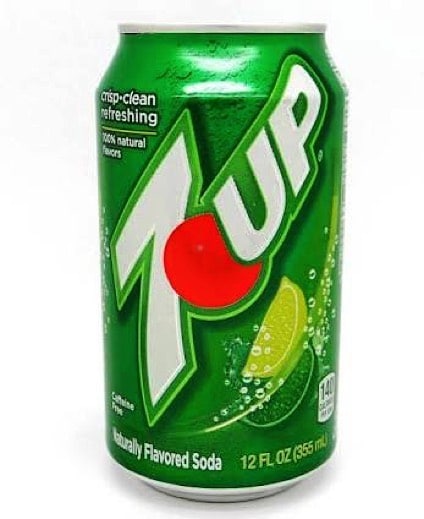
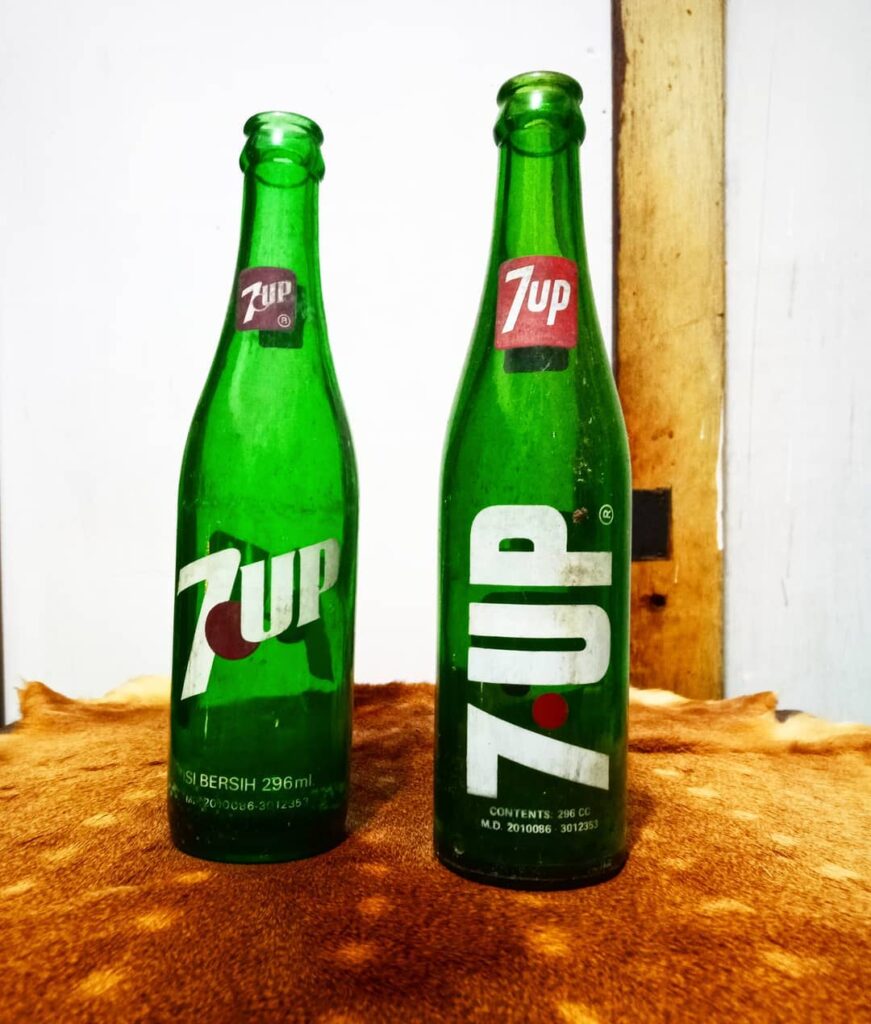
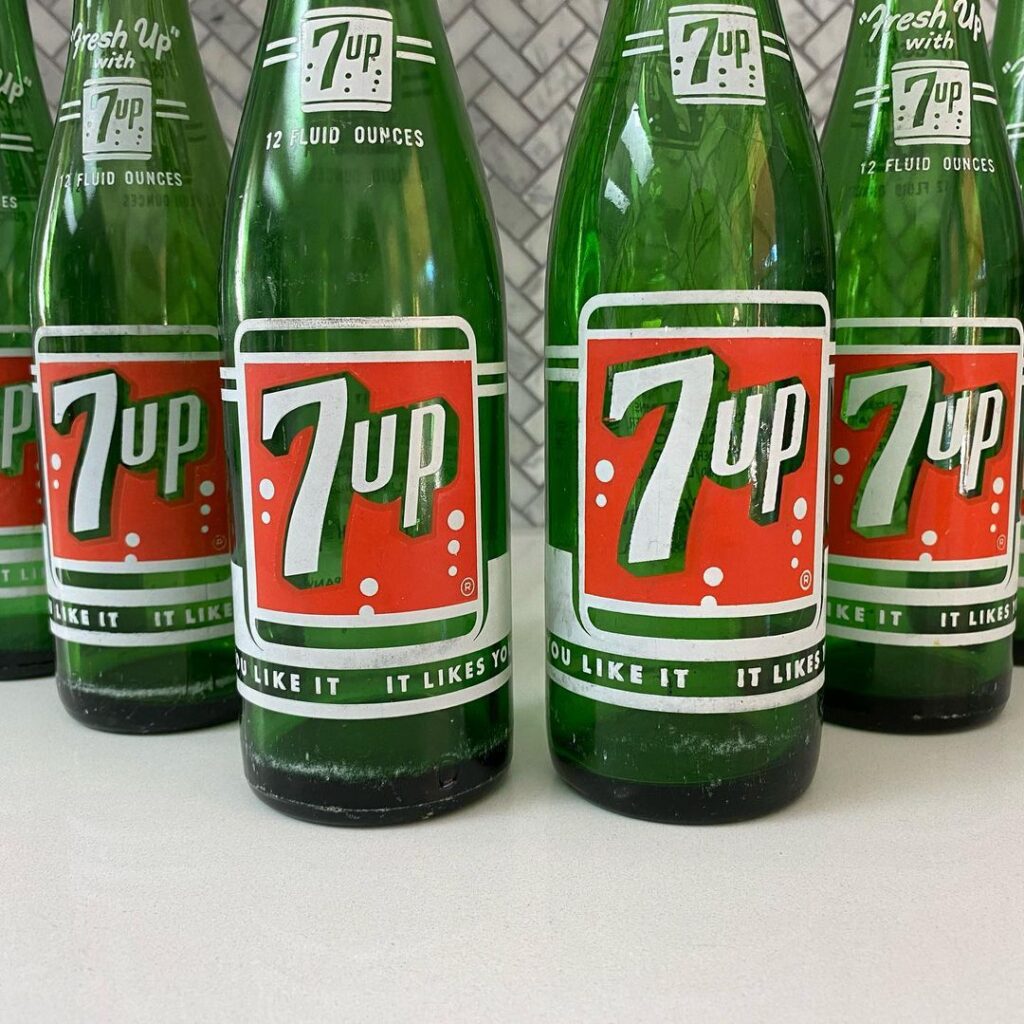
Commericals
Which 7UP Marketing Campaigns Have Been The Most Successful?
With the right marketing campaigns, almost any product can see a sales surge and become a staple in the market. This is no different with 7UP. Here are a few of the marketing campaigns that were the most popular and effective throughout the years.
- Post-Prohibition – 7UP became very popular post-prohibition by marketing their soft drink as an excellent mixer to go with hard liquor. Understanding that they could reach a broader market by including people who loved mixed drinks, they used that knowledge, and their sales soared.
- Seven Up Candy Bar
- 1967 – In 1967, they coined a phrase to describe 7UP, which some still use today. 7UP became the UnCola. Labeling 7UP as the UnCola certainly drew a line in the sand. They were stating superiority over colas. They had something to offer that other soft drinks just could not compete with. This was a highly successful campaign, where more than 50 years later, people still know you are talking about 7UP when you say the UnCola.
- 1975 – In 1975, they became the first soda available in one-liter bottles, and they came up with the catchphrase, “Follow the liter.”
- 1987 – 1987 had two different marketing and product tricks. The first was to offer a new flavor. In 1987 Cherry 7UP was born. Along with the addition of this flavor, Spot. Spot is the circle between the number 7 and the word up. They made a cartoon version of Spot, which attracted a younger and more enthusiastic audience to their brand. Finally, Spot became so popular that they were able to sell licensed items based on his likeness. Spot appeared in advertising and various packaging materials until 1995.
- 1999 – 1999 represents the final super popular advertising campaign which featured comedian and actor Orlando Jones. The slogan he said and soon everyone else was saying was, “Make 7 Up Yours.” Obviously, where you put the emphasis on this sentence can change the meaning. Because of this, it became a trendy slogan for everyone to repeat.
- 2002 – dnL Soda was released dnL and while being an unusual name, and it is, but if you turn 7up upside down, this is what you get. Unfortunately, it only lasted a few years on the market but its fondly remembered.
Who Owns 7UP?
7UP has now been around for almost 100 years. Like most companies and products who enjoy this type of longevity, ownership has changed hands several times.
- The original creator and owner were C.L Grigg until the first time it changed hands in 1978. In 1978 the Phillip Morris Company acquired the Seven-Up Company.
- In 1986 The Phillip Morris Company sold domestic US operations to a private investment group. The company merged with the Dr. Pepper Company.
- In 1995, Cadbury Schweppes bought out the Dr. Pepper/7Up Company.
- In 2008, Cadbury Schweppes separated these beverages into a new company called Dr. Pepper Snapple Group.
- In 2018, this was sold to Keurig and was renamed the Keurig Dr. Pepper Group.
7UP Products
When looking for the 7UP products, there are really two categories – specifically, 7UP products and the brands under the Keurig Dr Pepper brand.
The 7UP Products are:
- 7UP
- Zero Zero 7UP
- Cherry 7UP
The brands underneath the Keurig Dr. Pepper Group are a combination of coffees, soft drinks, teas, waters, juices, juice drinks, mixers, and more. Here is a partial breakdown:
- The coffees include green mountain, donut shop, Tully’s, krispyKreme coffee, Newmans own, cafe escapes. Cinnabon, donut house collection, Kahlua, Orient Express, and more.
- The soft drinks include 7UP, Dr. Pepper, A&W, Canada Dry, Schweppes, Squirt Soda, Crush, IBC, Vernors, RC, Hires, and more.
- The Tea and Water category includes DejaBlue, Snapple, Evian, and more.
- The final category of Juices, Juice Drinks, Mixers, and More include Mott’s, YooHoo, Mistic, Vernon Energy, Hawaiian Punch, SwissMiss, Nantucket Nectars, and more.
FAQ
Who owns 7UP?
7UP is owned by Keurig Dr Pepper in the United States, and Pepsi in the rest of the world.
Who makes 7UP?
7UP is manufactured by Keurig Dr Pepper in the United States, and PepsiCo in the rest of the world.
When was 7UP invented?
The original drink we now call 7UP was created in October 1929 (just a few short weeks before the infamous stock market crash) by a company owned by Charles Leiper Grigg.
How much sugar is in 7UP?
There are 38g of sugar for every 12 fl oz of 7UP.
How did 7UP get its name?
So, why is 7UP called 7UP? Although this is a prevalent question, there is no obvious or even official answer. However, there are many theories that people have come up with that could be the answer. We will share some of them with you, and you can decide which theory makes the most sense.

My name is Brianna and I love writing on all topics. Candy history fascinates me and I am passionate about sharing my love of this topic with everyone else!
Please leave a review or any memories of this snack in the comments below. Thank you!
Click here for a full A-Z list of Snacks and Candy
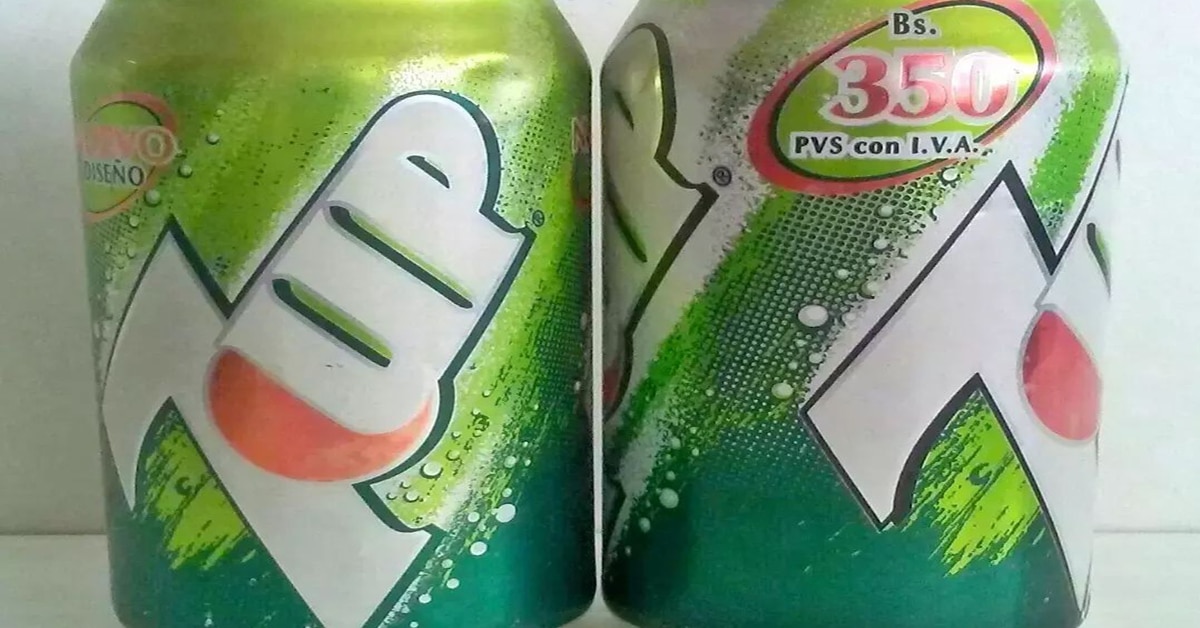
I was Advertising Mgr. for the international Division of The Seven-Up Co. then based in New York City from 1968 to 72 when the the company changed it’s name from 7Up Export Corp. to 7Up International, Inc. and moved to corporate Hq. in Clayton, Mo. a suburb of St. Louis. During my seven year career with the company, I introduced several advertising campaigns that could be used in most of our franchise “Developers” (the name use for our bottling plants in some 67 countries outside the U.S./Canada), without having to be put into many different languages. The key was to use only musical background and singers saying only the words “Seven-UP” which was the way we wanted the product to be called all over the world rather than saying the number “7” in many local languages. It was very successful. I had to travel the world many times to sell the concept. My wife at the time, Joan, not so much as we had three vary young children to rise. For more information, please contact me at [email protected] I am now age 85 as I write this in 2022.
David, Thanks for taking the time to tell us about your history with 7UP. We would love to hear more about your time as advertising manager at 7UP!
I have 10 old 7up bottlesfor sell